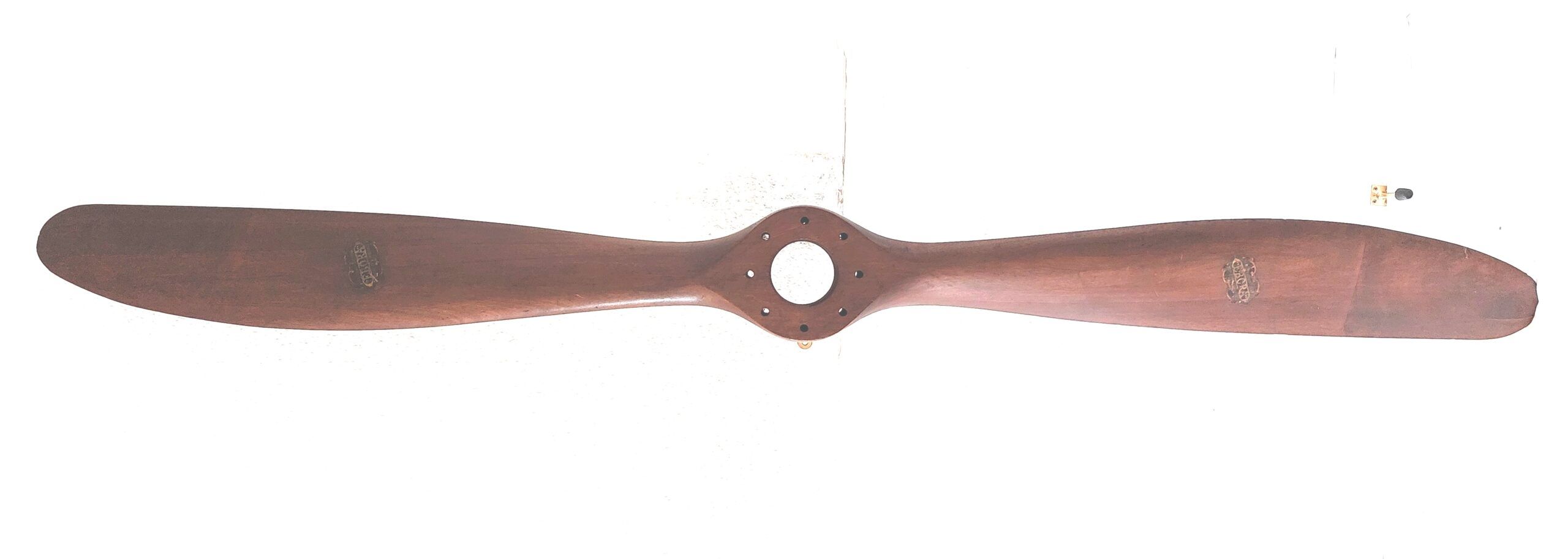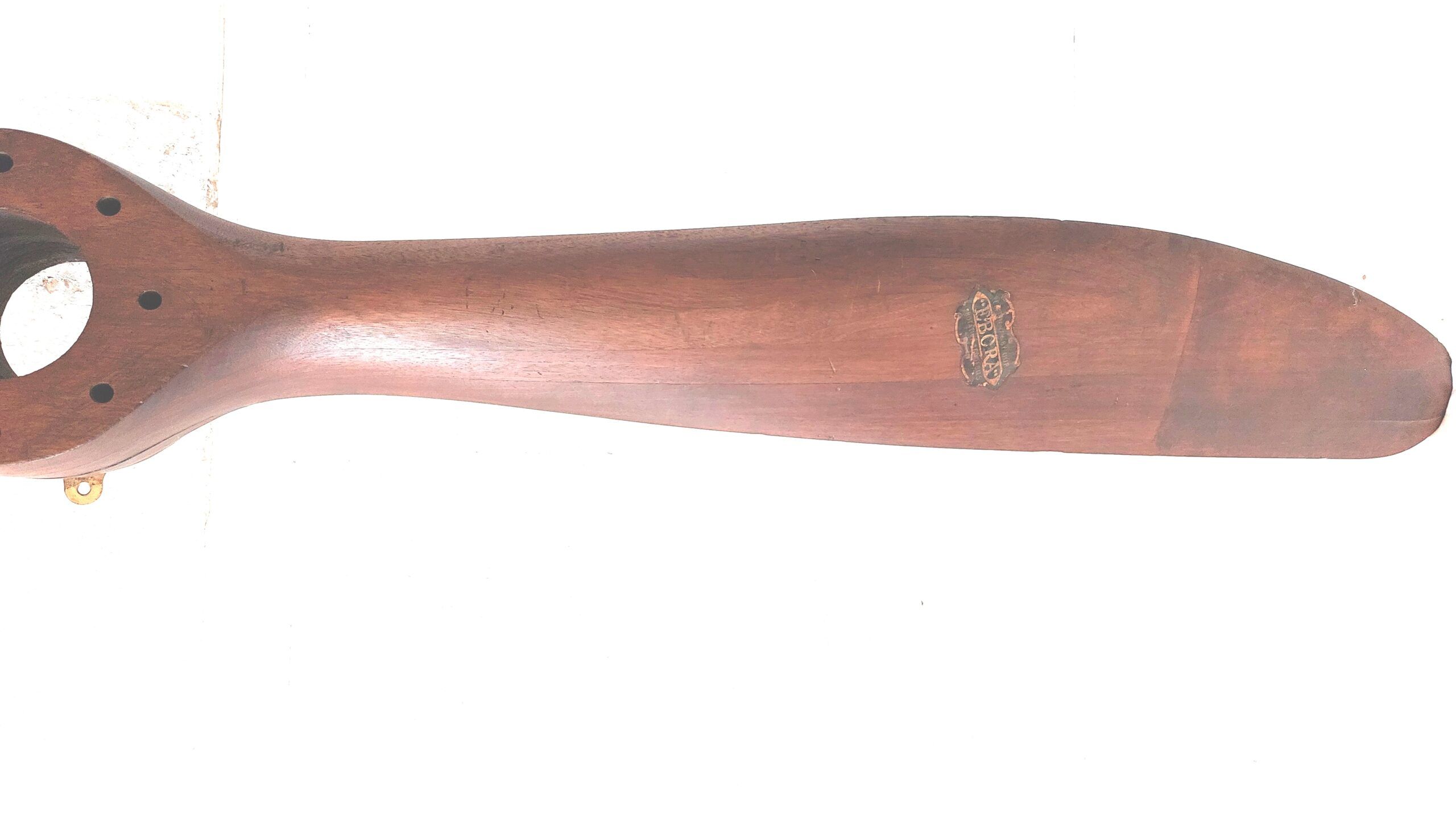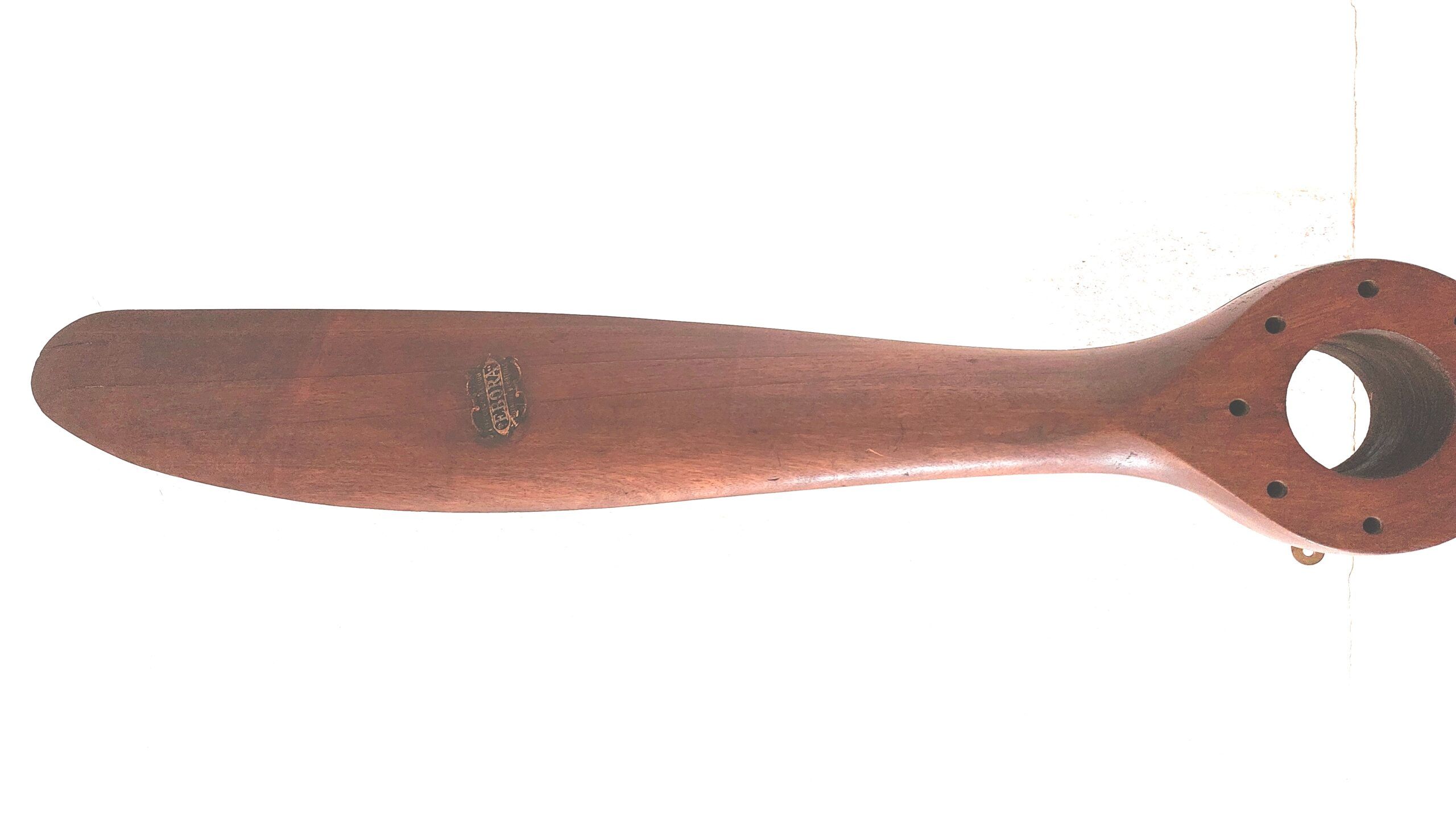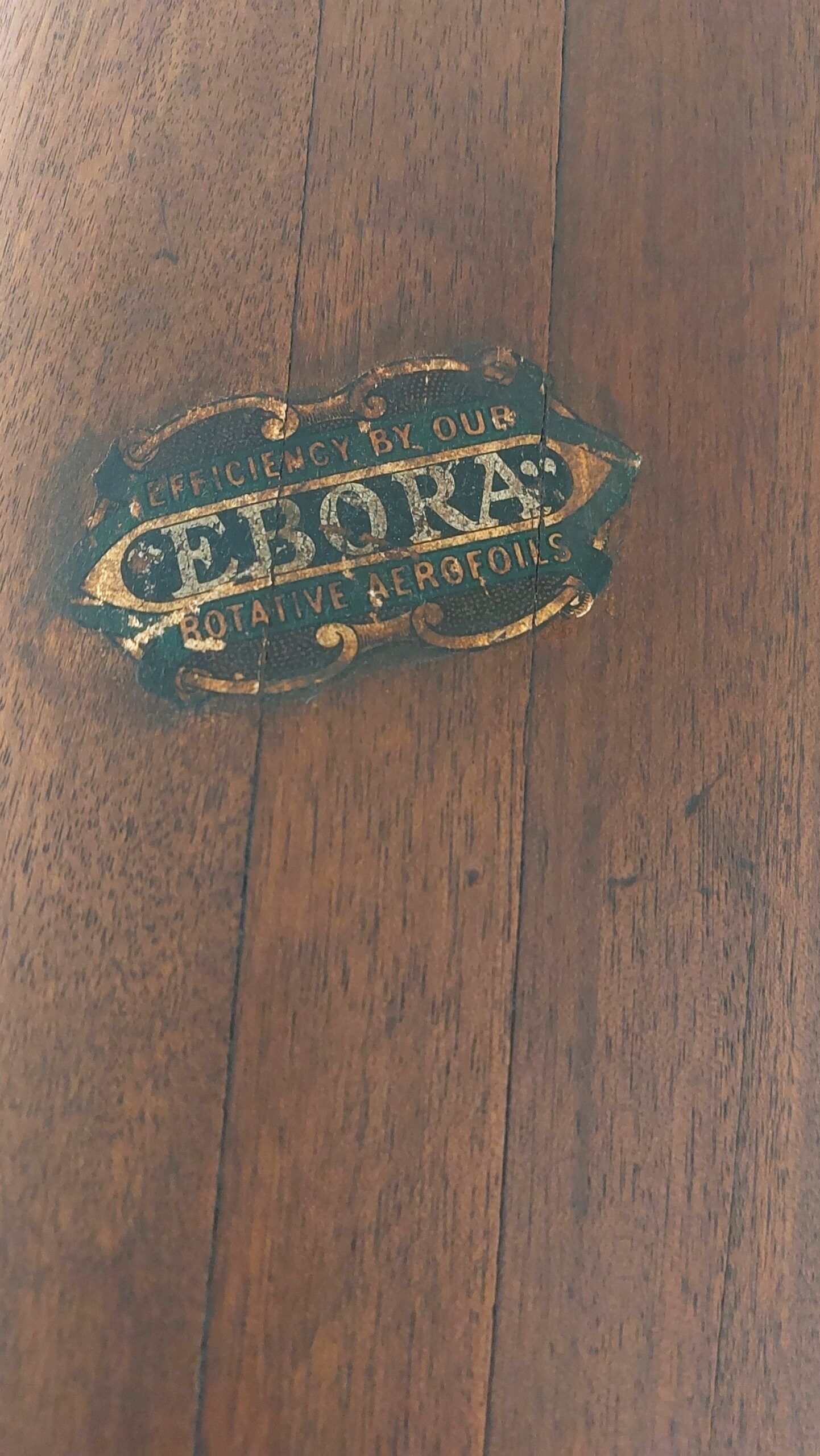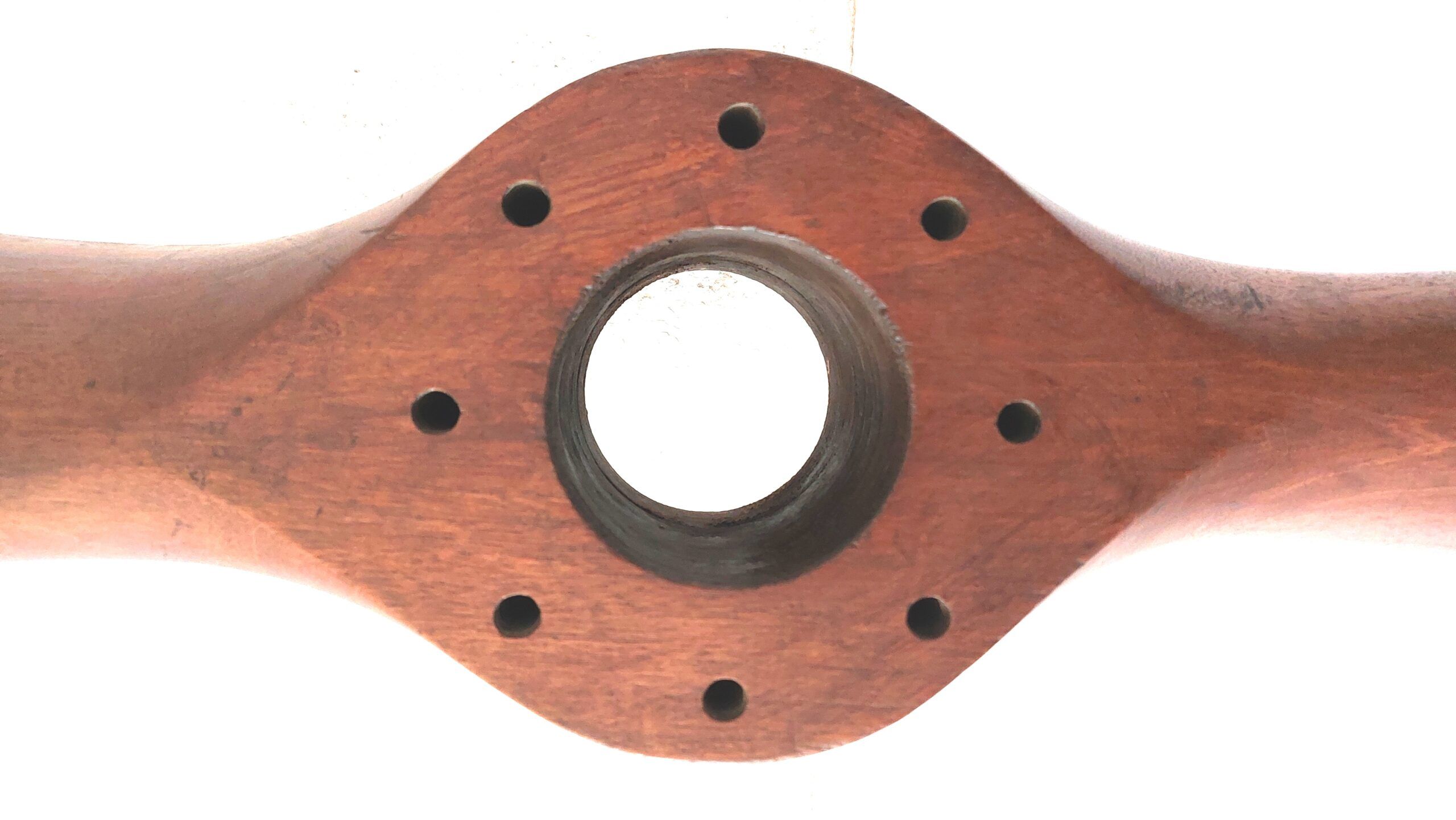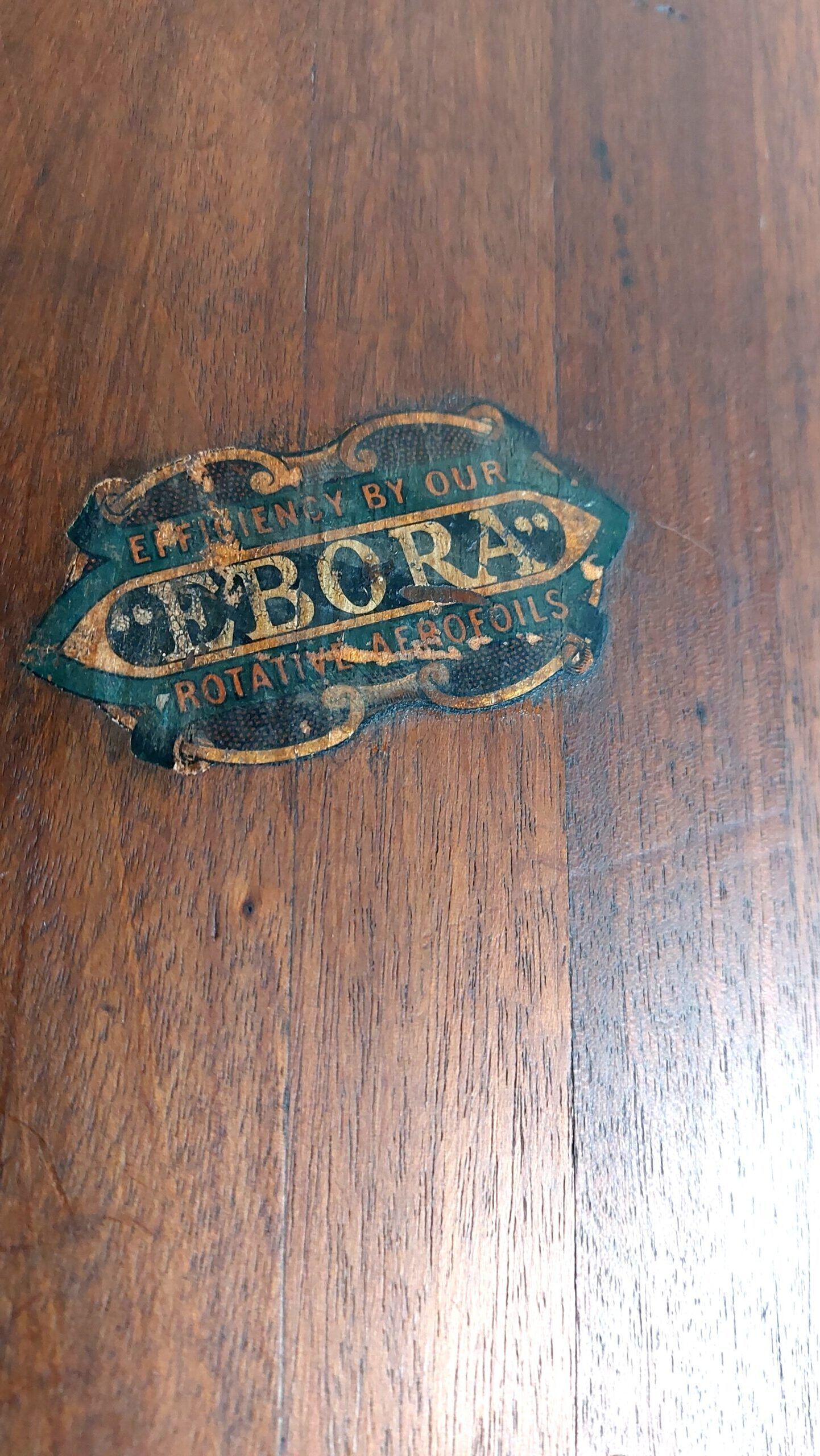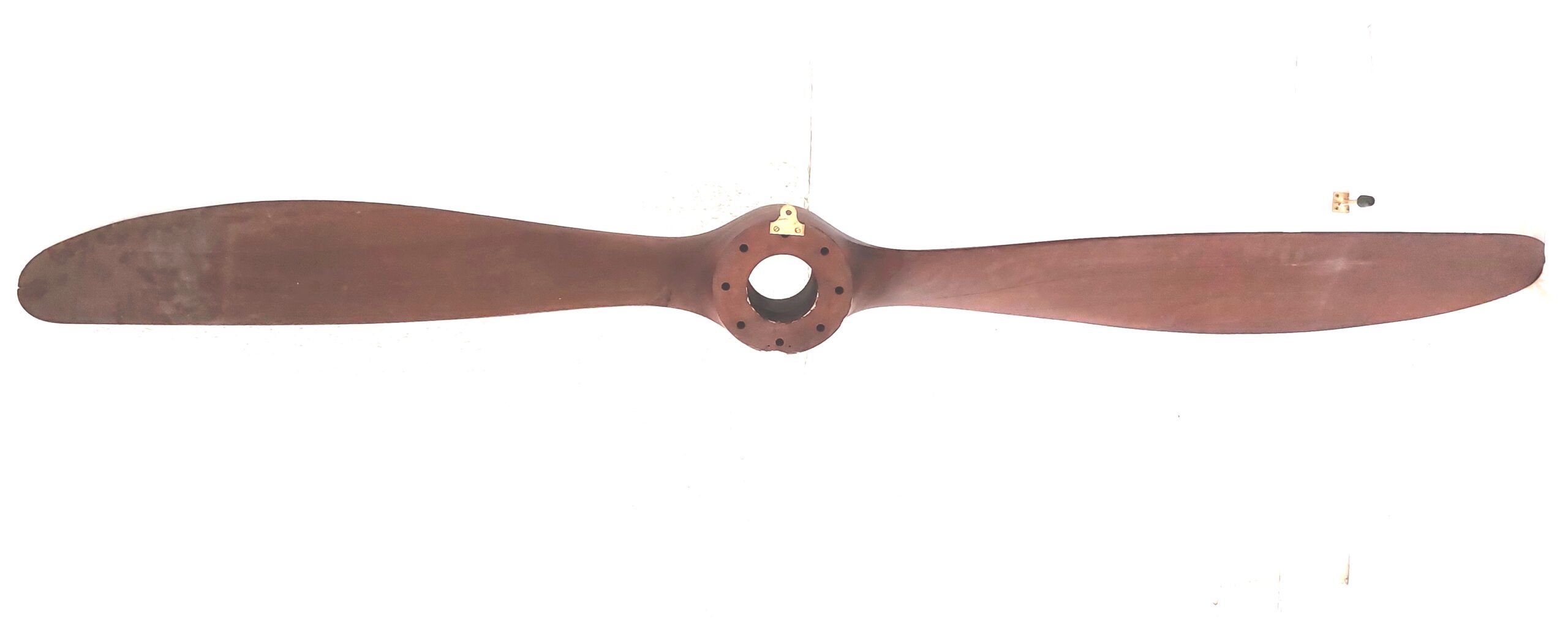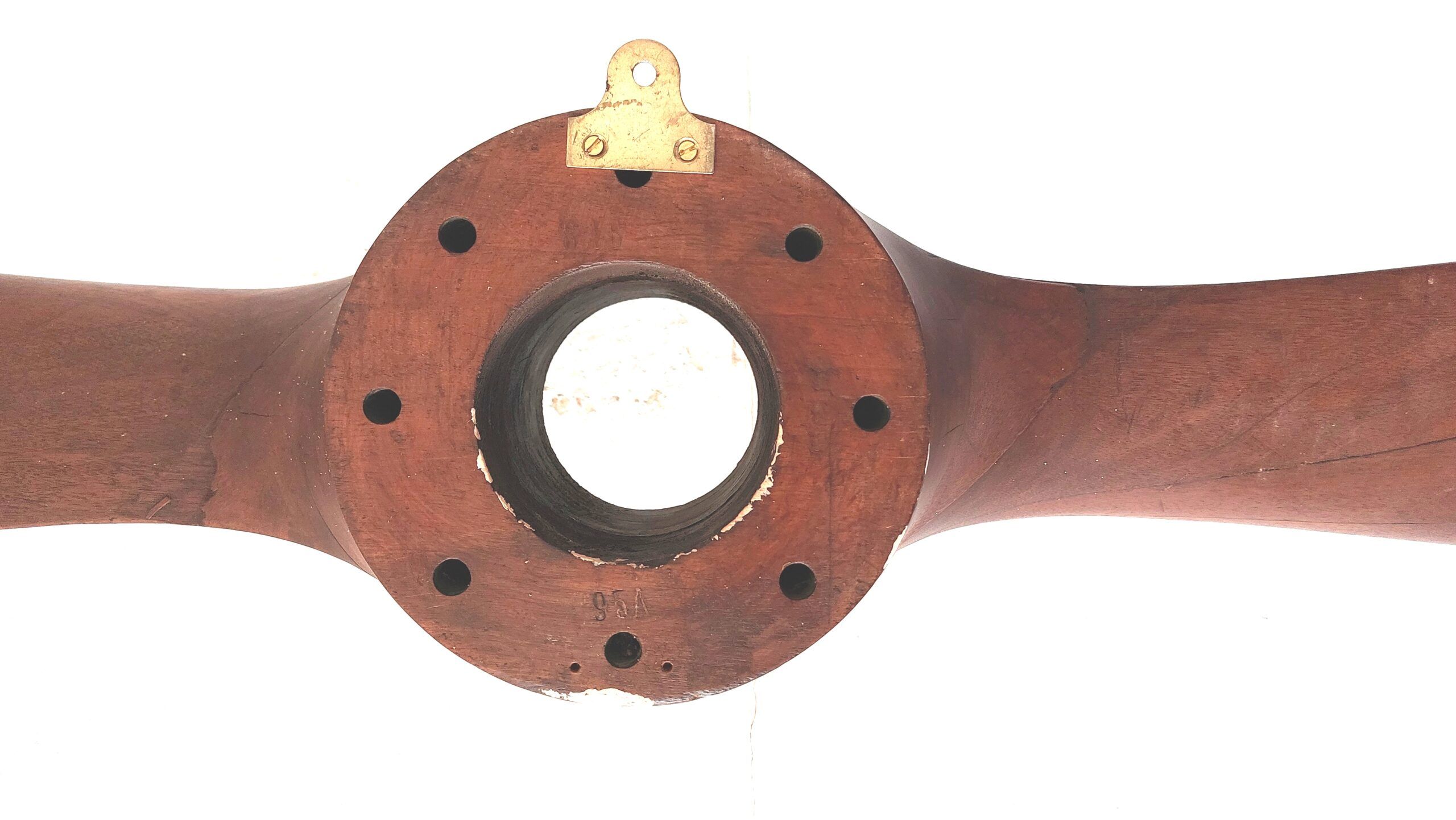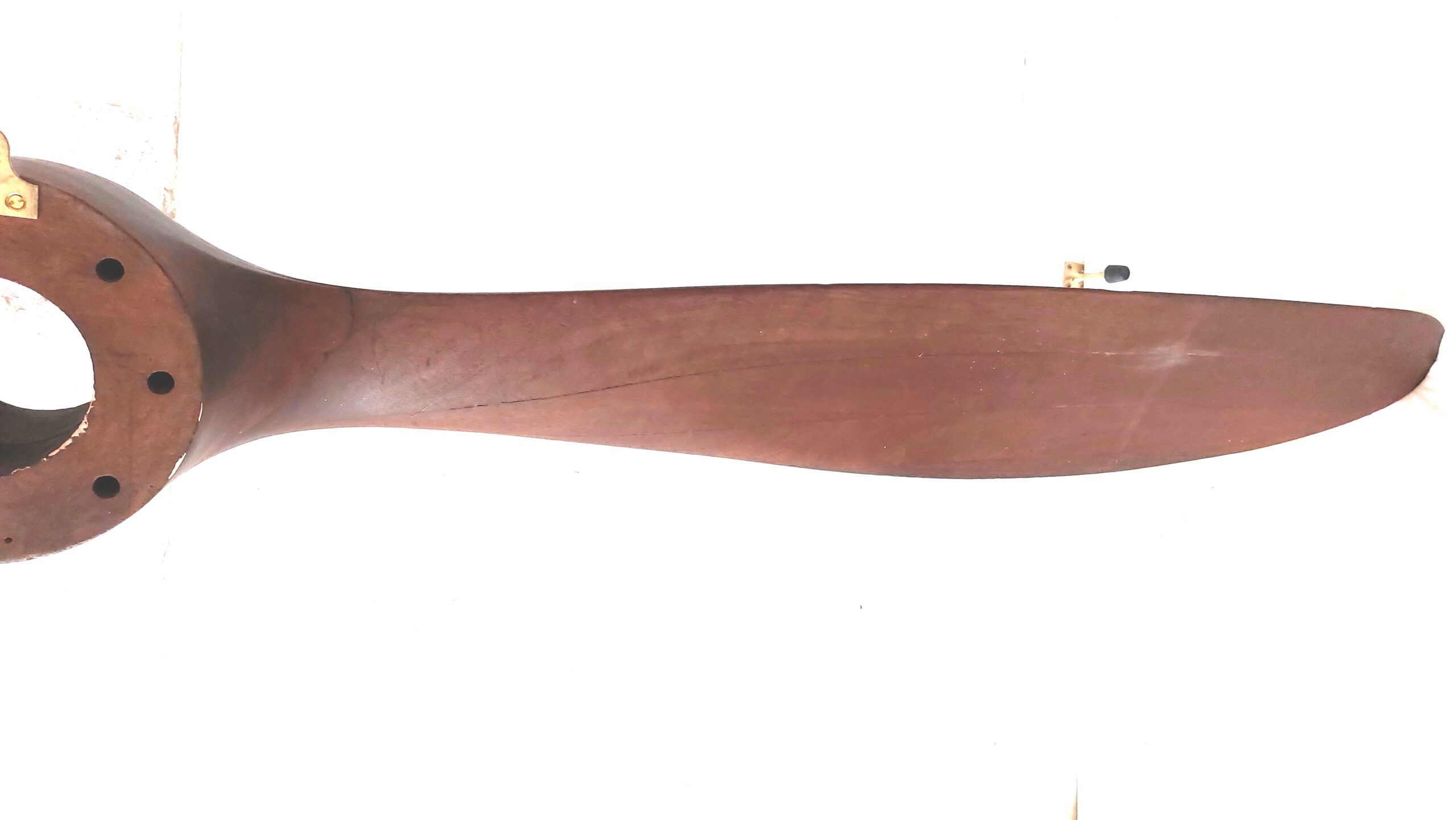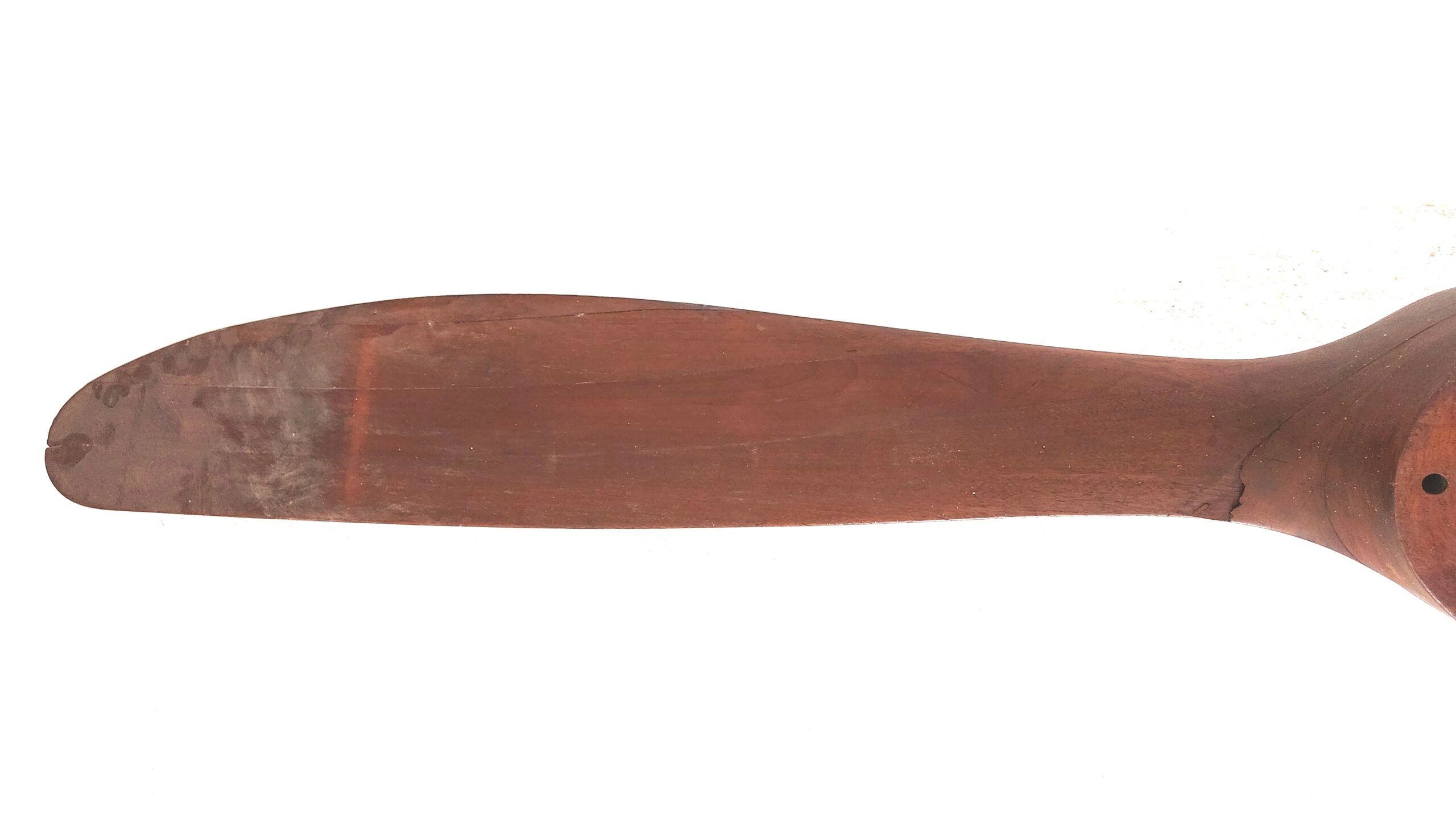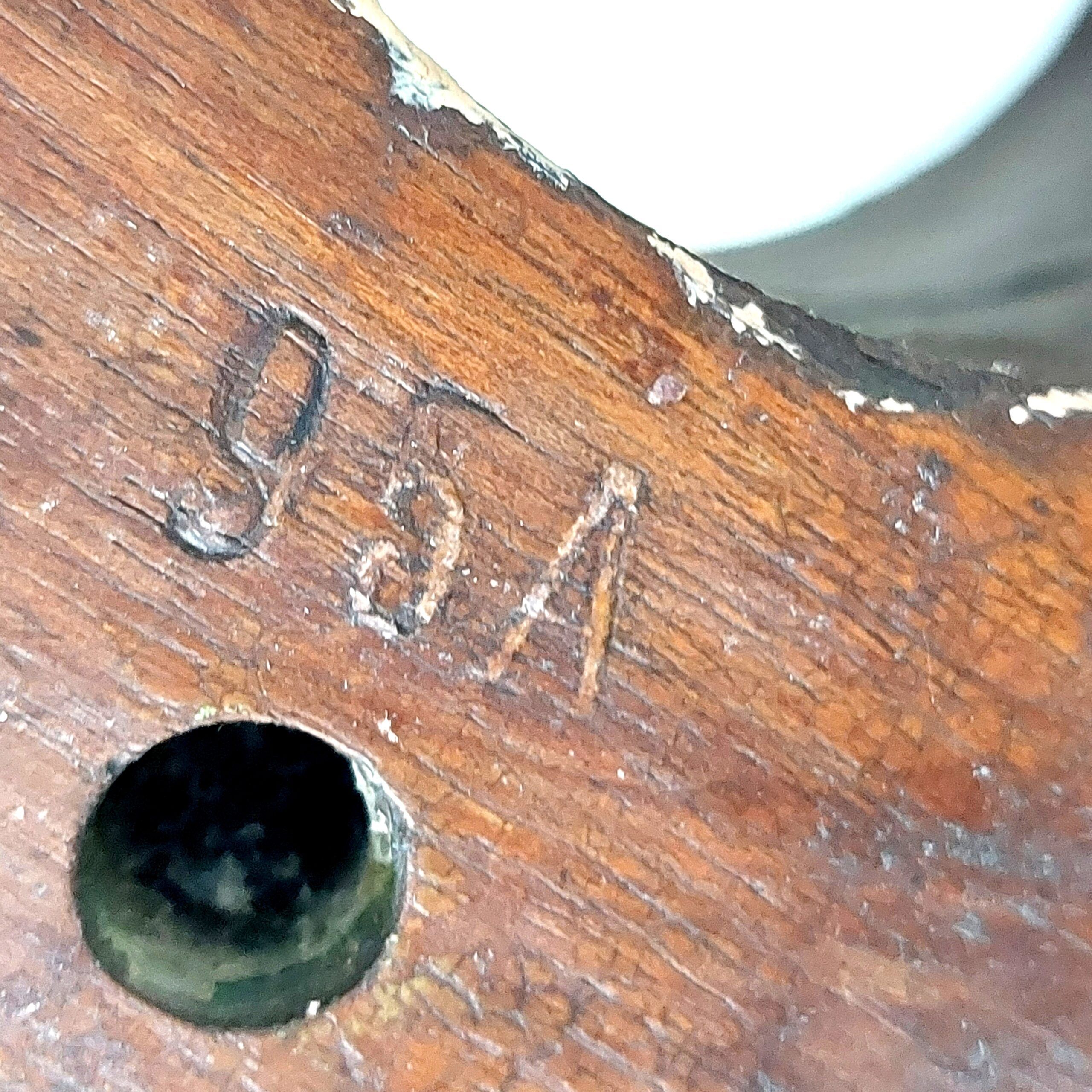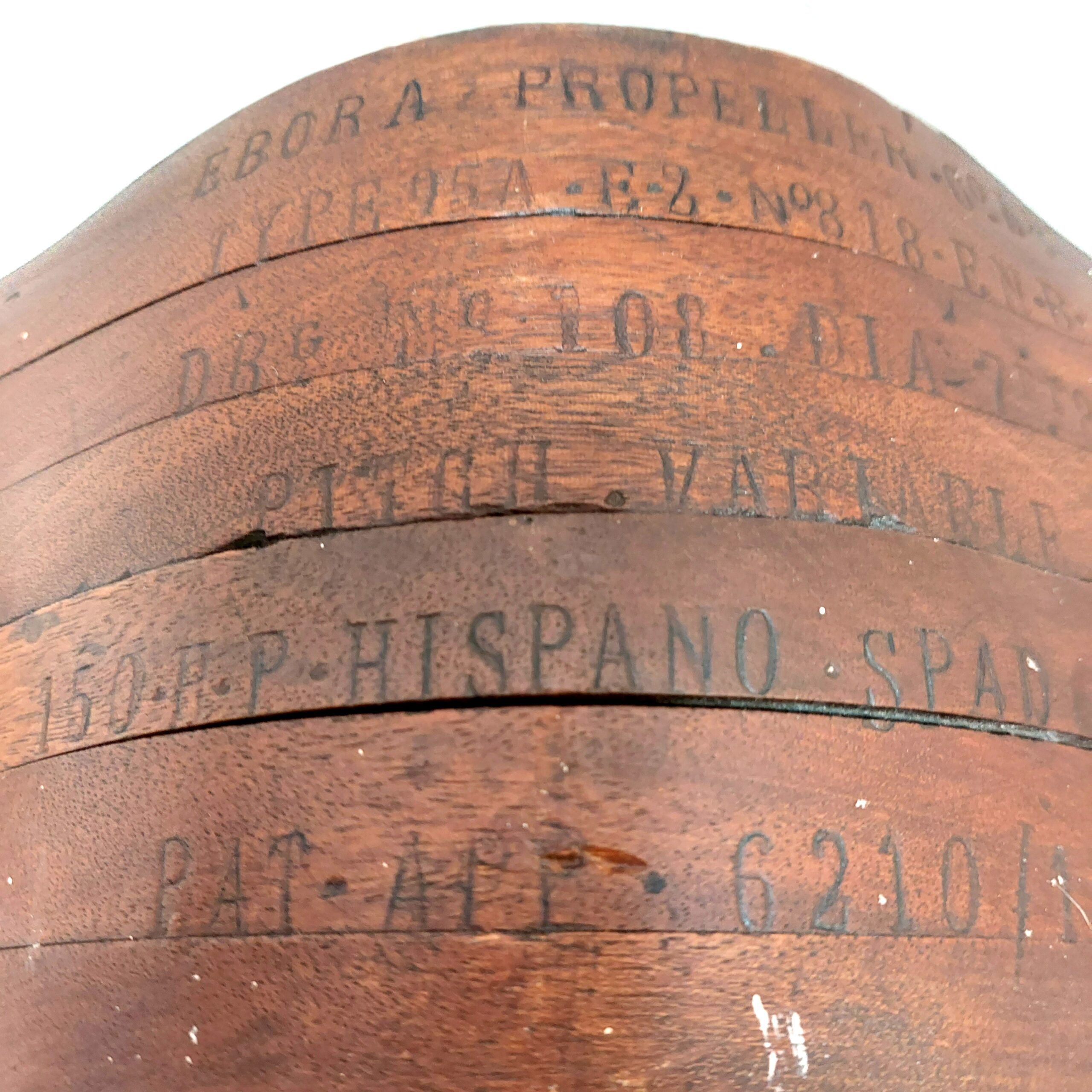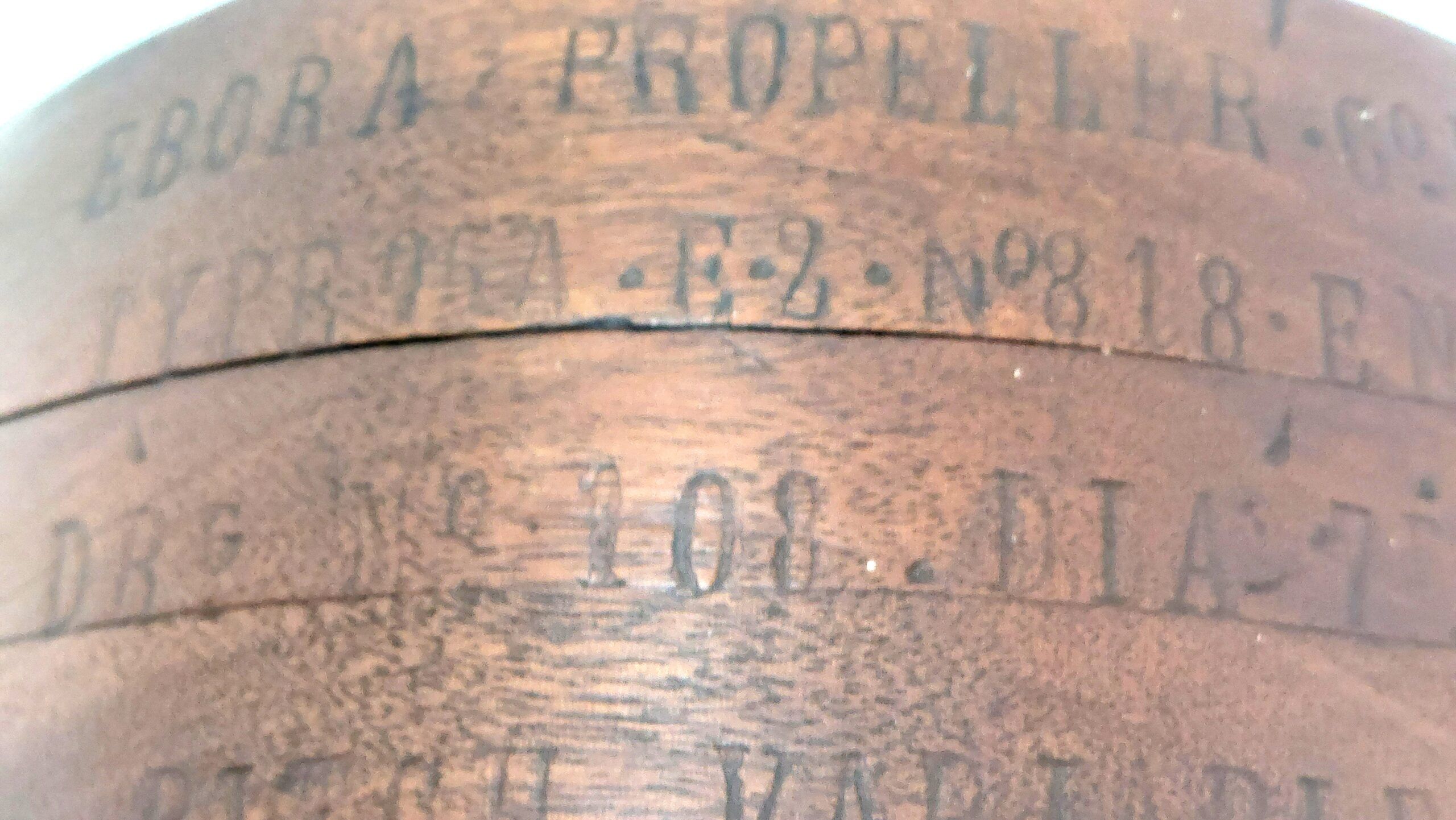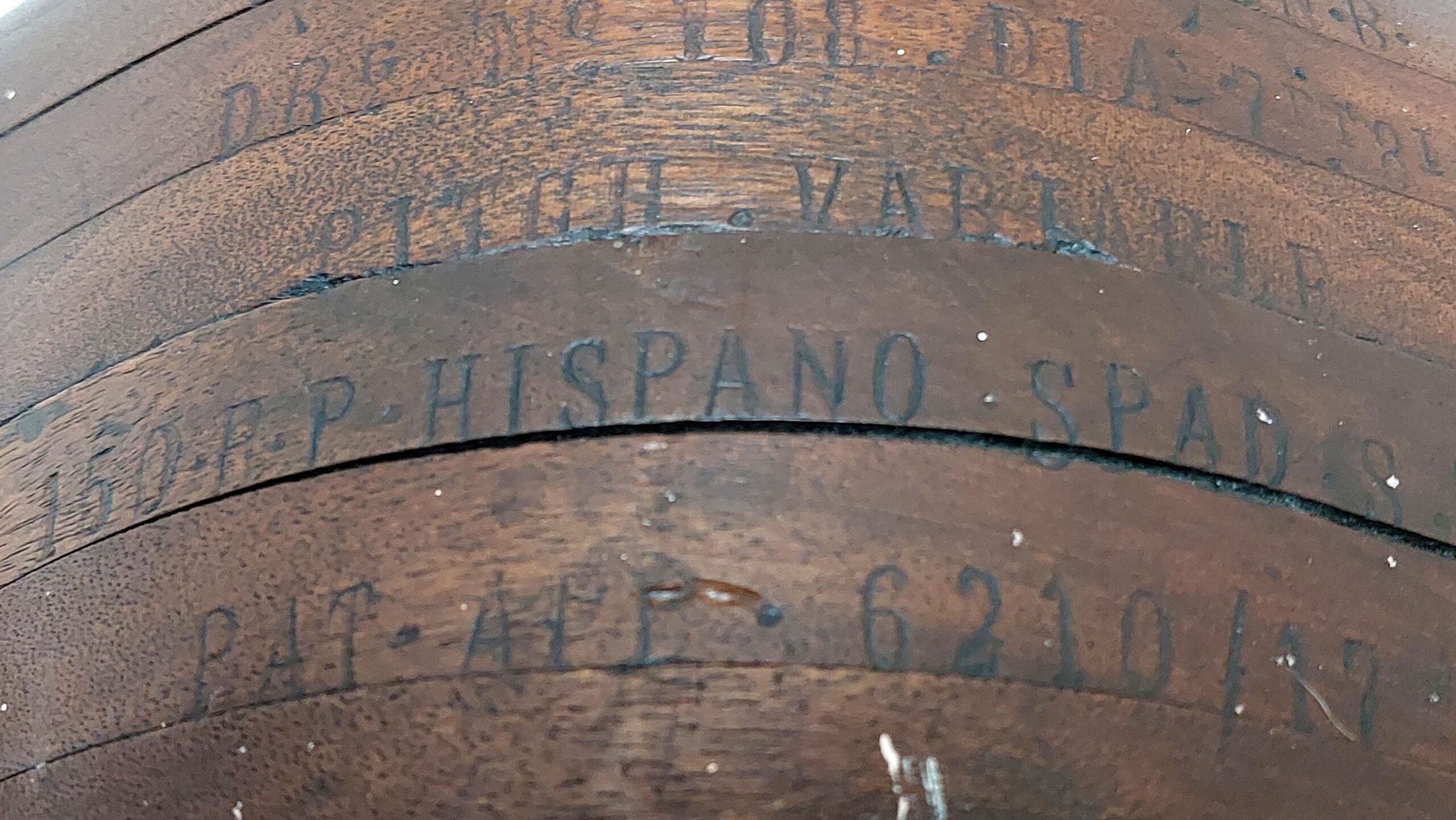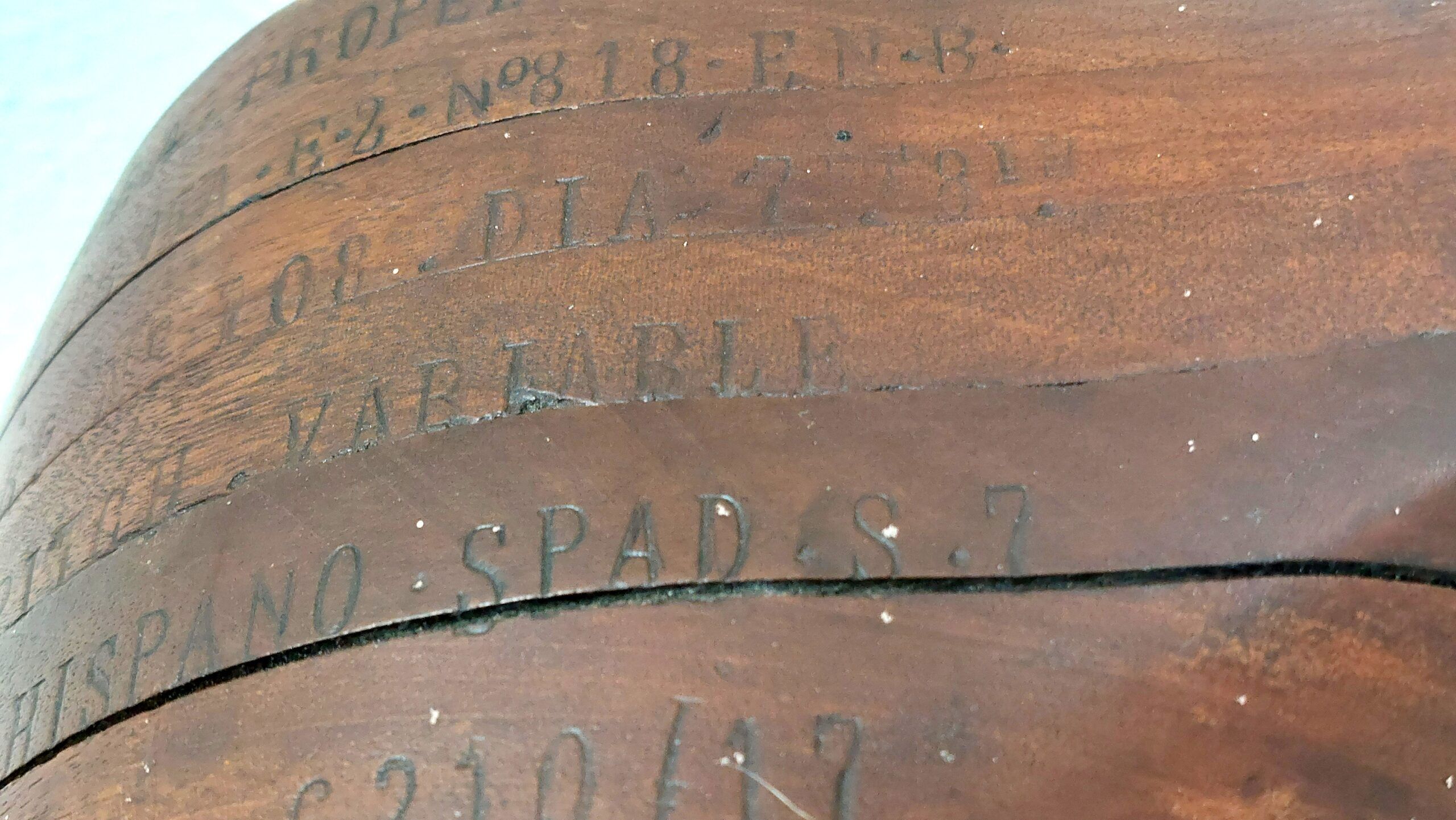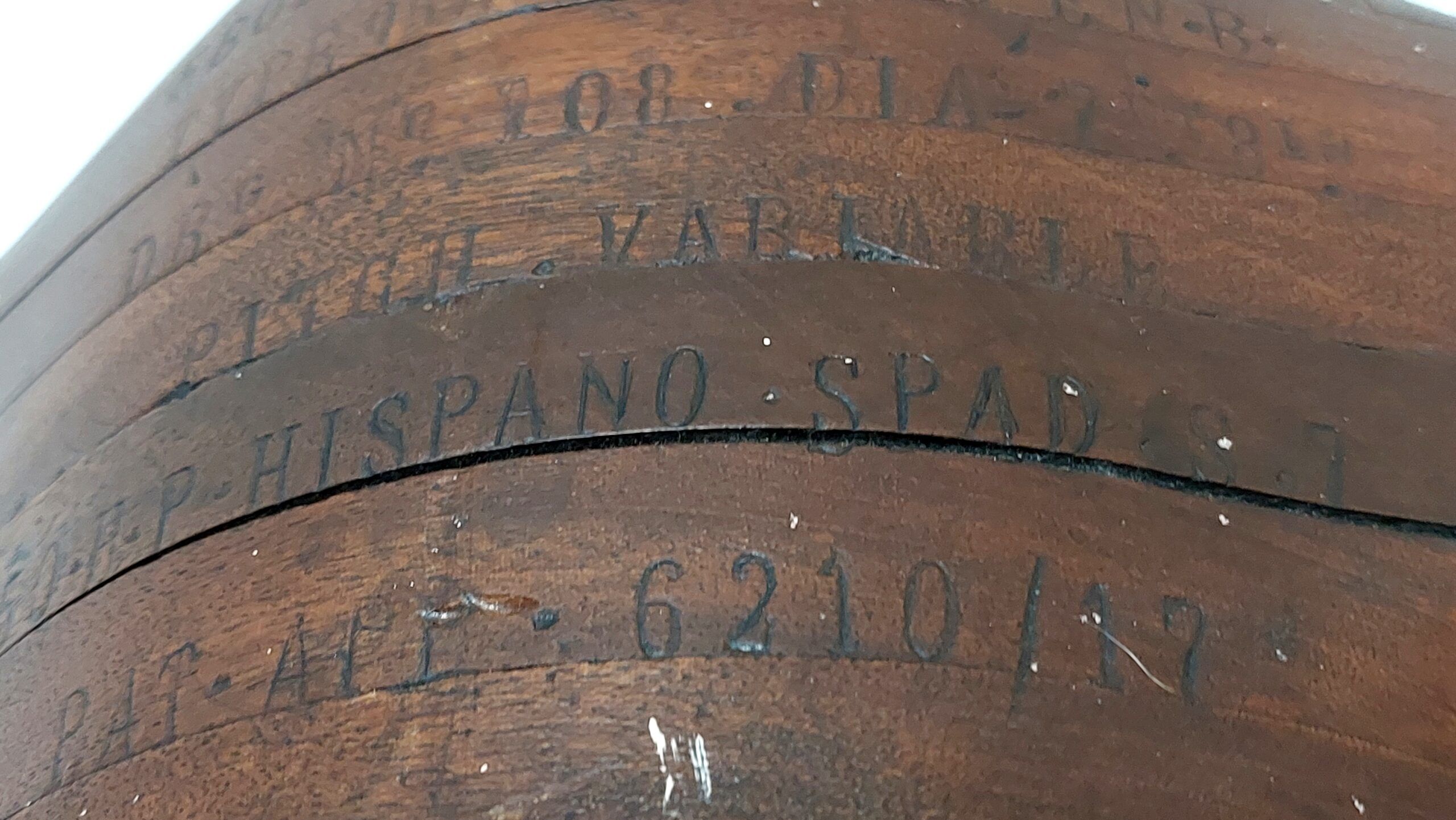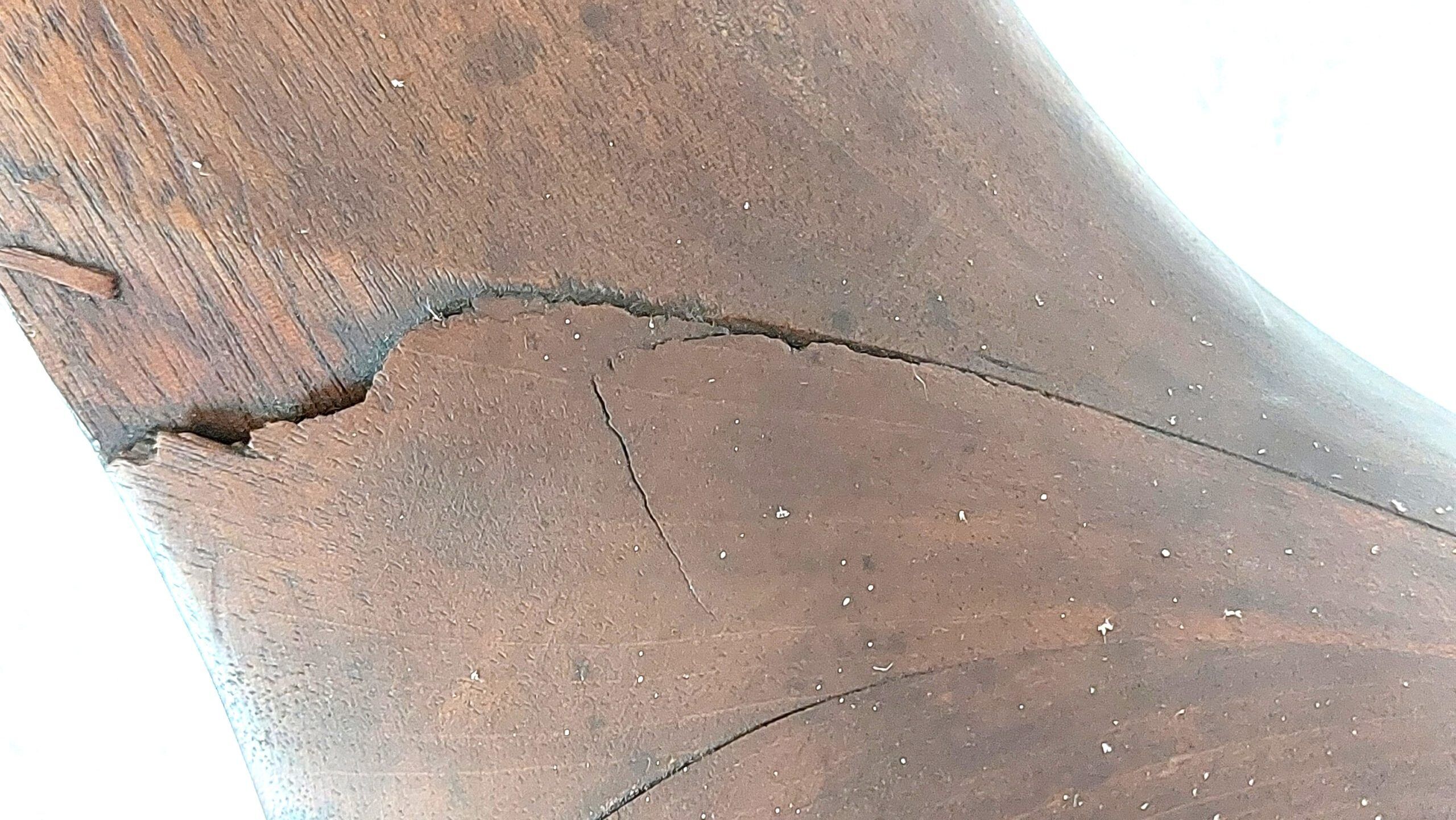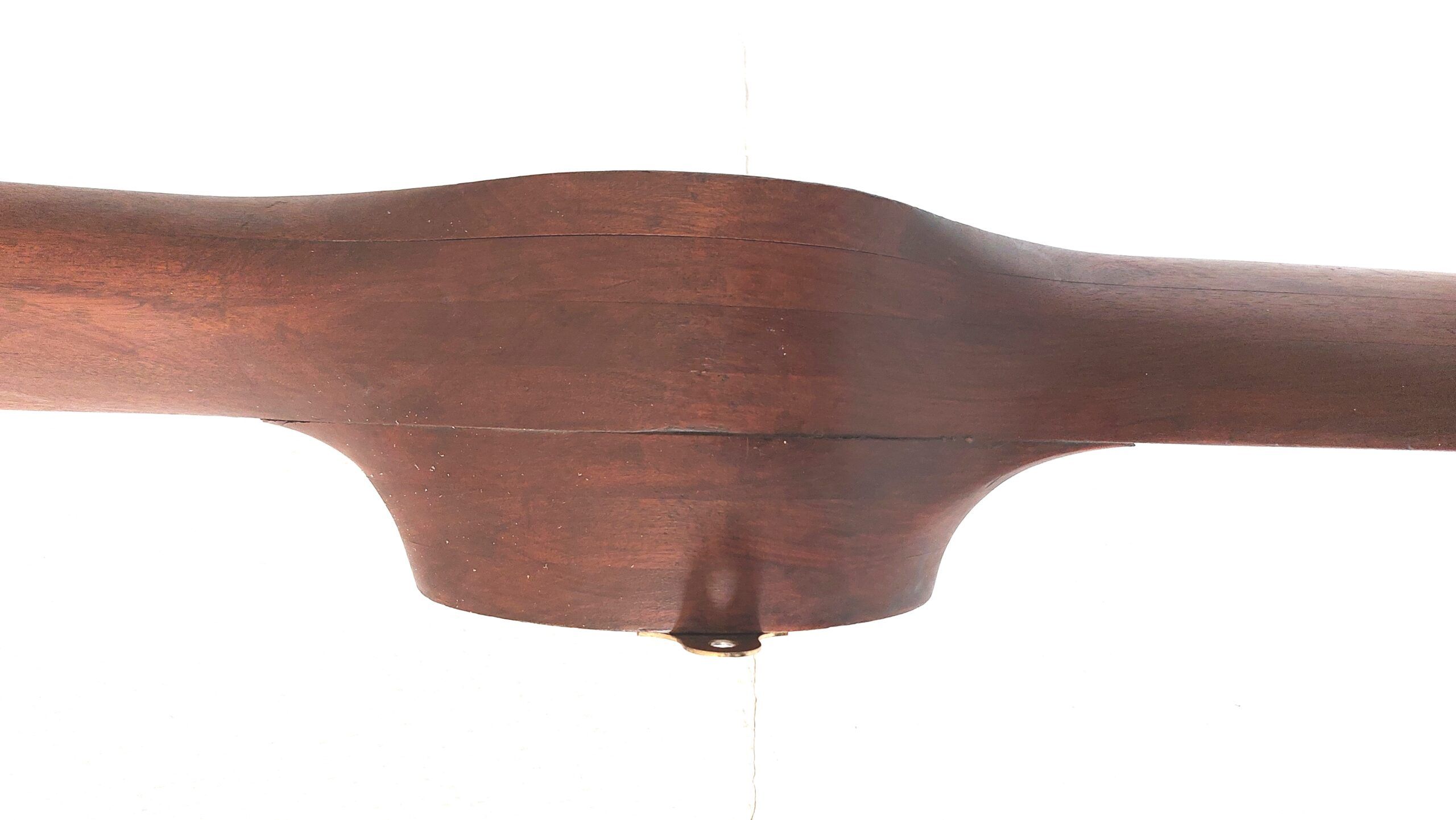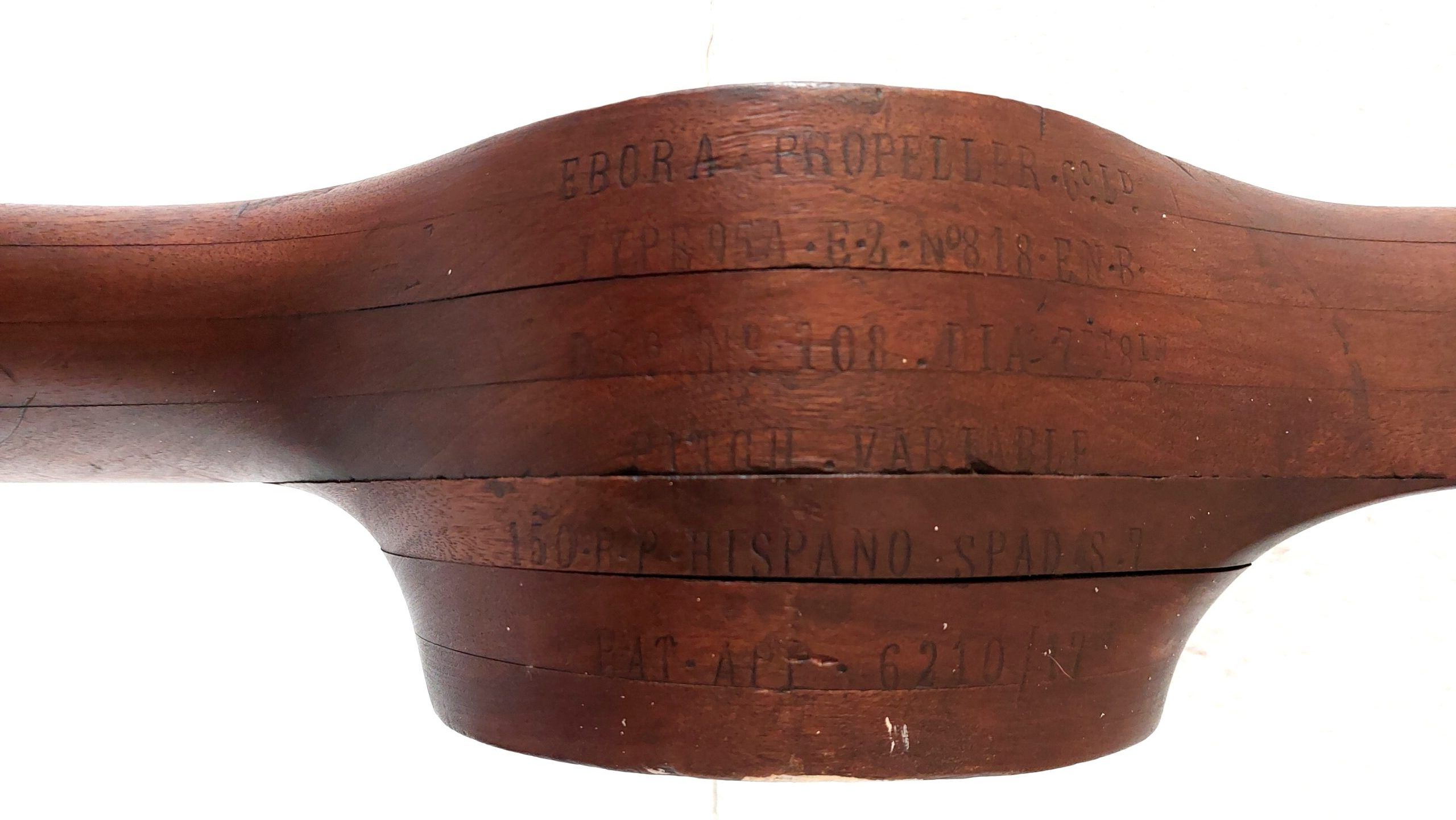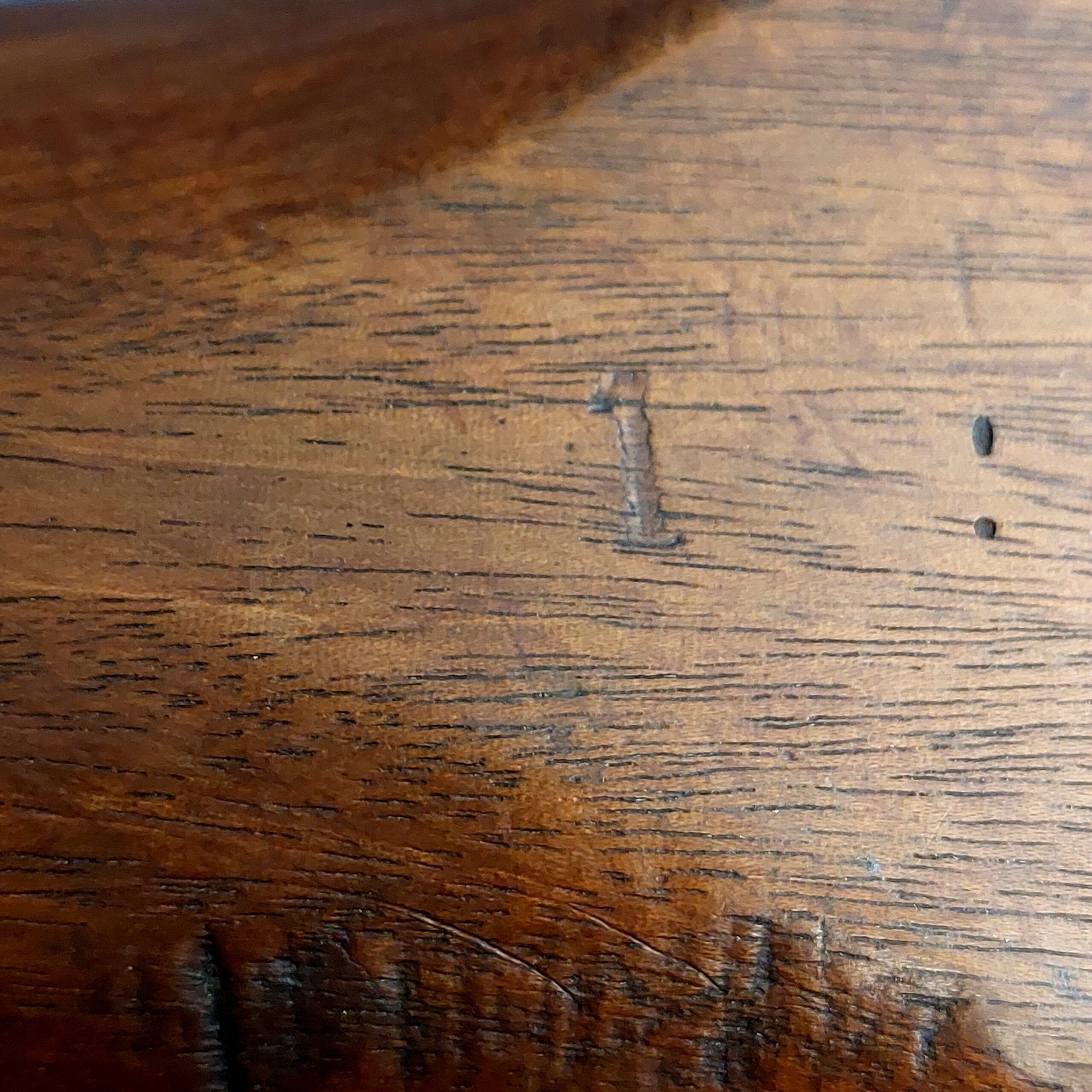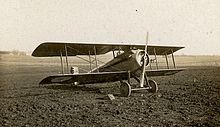*WW1, c1917, British Propeller Made by Ebora for French SPAD S7 BiPlane*
Marked on both blades: Decal “Efficiency By Our EBORA Rotative Aerofoils”
Marked by central hole: 95A
Marked on the outside of central hub:
“Ebora Propeller Co. Ld.
Type 95A-E-2-No818. E.N.B
DRg. 108. DIA-7FT.8IN
PITCH. VARIABLE
150.H.P.HISPANO SPAD.S.7
PAT. APP. 6210/17
Diameter of central hole: 10.5cm
Total length: 234cm – 7ft 8in
Depth: 15.5cm
8 Bolt Holes.
Mahogany
Manufactured by Ebora Propeller Co. at Kingston-on-Thames, Surrey around 1917, this propeller was designed for use on the French designed SPAD VII fighter.
Ebora Propeller Company Ltd.
Established in 1913 by Jan Schiere sr. in, Kingston-on-Thames (UK), the company. The name Ebora stands for: Efficiency By Our Rotative Aerofoils. The wooden propellers were made of Mahony because this type of wood will not splinter when you shoot accidentally a bullet through it.
SPAD S7
The SPAD S.VII C.1 was the first of a series of highly successful single-seat biplane fighters developed by Société Pour L’Aviation et ses Dérivés (SPAD) during World War I. Designed by Louis Béchereau, it made its inaugural flight in April 1916 and became known for its robust construction, stable gun platform, and good diving and climbing characteristics. Although it was less maneuverable compared to the lightweight Nieuport 17, it proved effective in combat due to its durability and stable handling.
The early models were powered with the 150 hp Hispano-Suiza 8A engine which were later upgraded to 180 hp and 200 hp Hispano engines as they became available. The S.VII featured a wooden frame covered in fabric, with the forward fuselage reinforced by steel sheeting. Its armament included a .303 caliber Vickers machine gun mounted on the forward fuselage and synchronized to fire through the propeller arc.
An initial order for 268 units was placed on May 10, 1916, and production eventually totaled between 3,825 and 5,600 units in France, 220 in the United Kingdom, and about 100 in Russia. By mid-1917, around 500 S.VIIs were in front-line service, largely replacing the Nieuport fighters. It was flown by many renowned aces, including France’s Georges Guynemer, Italy’s Francesco Baracca, and Australia’s Alexander Pentland.
While initially outgunned with a single machine gun compared to the dual-gunned German Albatros D.III, the SPAD S.VII’s strengths were its speed and structural integrity. It was gradually succeeded by the SPAD XIII in front-line roles but continued to serve as a trainer until 1928, becoming a key component of Allied air forces during and after World War I.
*Condition*
Given its age and service this propeller is in excellent used condition. Please see photographs as part of the condition report.
Please contact the shop for a shipping quotation.
RQMAAOOXBCEO_2524181872


